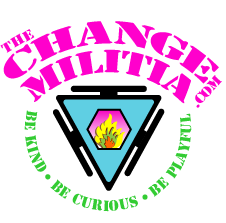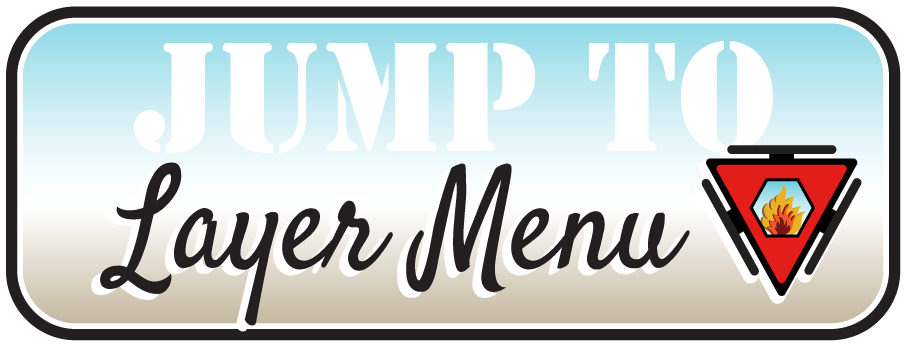Layer Sixteen, Week Three – Sunday
- Read Week Three Concepts
- Watch videos and read description for Smile Kriya
- Do Movement – Smile Kriya
Sunday’s Focus
Spend the day monitoring your transitions. Begin to discern major, minor, and subtle changes. Deconstruct movements into transitions by identifying the before, during, and after states.
Sunday’s Concepts
This week, you will explore the energy configurations of Transitive. Generally, Transitive is the shift from one configuration to another. You transition from Stagnant to Percolating or Accumulating to Explosive. You transition from focused to unfocused.
Every movement down past the submolecular level has a transition. Every thought, emotion, and sensation transitions. The healthier and more aware you are, the easier those transitions will be. Enlightenment and Bliss walk hand-in-hand with effortless transitions.
Transition = Change = Movement … and its corollary: No Transition = No Change in Movement.
Let’s explore the causality of Transitive. Your subconscious mind’s biggest goal is to keep you from shifting out of what is familiar. You, your bodies, and components are always configured in some way. They will stay configured that way until the momentum for change overwhelms the energy you are expending to maintain the current configuration(s).
If you resent your father’s siblings, that resentment will persist until there is more change energy available than keep energy. Your resentment may haunt your Aunt and buckle your Uncle but until you release the energy you are expending to hold the resentment, it will strain your brain with relation vexation.
Your subconscious mind gets increasingly disregarded as you expand your Essence and Hara. As subconscious influence wanes, transitions become more fluid and effortless because it is your subconscious mind that creates resistance – no resistance means no effort. Effortless is efficient. Transitions require energy. How much energy and the level of efficiency is determined by the magnitude of the resistance.
Simple and complex movements (like habits) will persist until sufficient energy is marshalled in opposition. This is Newton’s First Law of Motion: A particle initially at rest or in uniform motion continues in that state unless compelled by forces to change it. The key word here is compelled. You have habits that persist until something becomes more important. You will continue to eat Oreos for breakfast until you run out of Oreos or until something compels you to make a change. The compelling energy must be stronger than the existing energy.
Monday’s Focus
As you get better at identifying your transitions, see if you can highlight the ones instigated by your subconscious mind.
Monday’s Concepts
I eat more home-baked sweets and treats than is optimal for my health. I know this. I accept and acknowledge it to be true. Every time I make a batch of brownies, I am aware of it. My knowledge of the non-beneficial nature of the sugar content of brownies has not yet compelled me to stop baking them. If I want to improve my diet, I will have to have a compelling reason – a reason with more energy and potential than my love for chocolatey gooey goodness.
Everything in your life is the same way. Want a more loving relationship, better fitness, higher paying job, or less anxiety? Find a motivation that has more energy – that is more compelling – than the factors that power your current habits and patterns. Nothing else will work. If you don’t believe me, ask Isaac Newton.
Newton’s First Law is based on the initial energy not changing. The other tool you can use is to lower the energy of the habit or pattern you want to change. When you do, it will take less energy to compel a shift. Devaluing your drama, stories, habits, and personality traits will make them easier to overcome with something new.
His first law also doesn’t take into account gradual changes to energy and value. If I gradually get carpel tunnel syndrome from mixing brownies, I will eventually not be able to make brownies. The compelling reason for change will eventually deform my habit. The deformation happens and persists. Like hammering a dent into a car. Each hammer blow makes the dent worse.
To change the trajectory of an existing movement, you will either overpower, devalue, or deform it. To maintain a healthy trajectory, you will need to overpower, devalue, or deform any energies that challenge your intention. All healthy and increasingly beneficial movements will have elasticity to maintain trajectories and improve trajectories.
Unhealthy or non-beneficial movements will have a rigidity to maintain trajectories and elasticity to resist improving trajectories. My love for brownies is an example. I allow myself to continue the habit, maintaining the increasingly unhealthy trajectory, by resisting the energies for beneficial change and continuing to value my love of the cacao carb concoction.
To maximize your growth, realize that as things change, you must change in whatever ways are necessary to maintain optimal energy flows in your intended trajectories. Your resistance to change will always impede growth. The value you place on current patterns will always make it harder to compel change.
Tuesday’s Focus
When you identify subconscious transitions, search for the causality. What instigated the change? What fear underlies it?
Tuesday’s Concepts
You retain and perpetuate your current habits, beliefs, patterns, relationships, and personality because you resist change. You do what you do, say what you say, and maintain current levels of kindness, happiness, anger, resentment, fulfillment, intimacy, and success to the degree that you are unwilling to change.
You are who you are because you are afraid to be someone else.
Feel into that. You are who you are because you fear changing yourself for the better. You, actually all of humanity, squander opportunities daily to grow because growth requires change and change can be inherently uncomfortable or completely terrifying. Change triggers a very primal and elemental fear. Your subconscious mind is constantly trying to convince you that change brings about pain, injury, and death.
Your personality persists for the same reason. You confirm your habits and patterns every day. You confirm your biases, intolerances, and judgments – we all do.
You also confirm the limits on your beneficial patterns. If you are habitually kind, those kindnesses will have a typical depth and breadth. You will be kind in the same ways to the same degrees with the same people. Your kindness will have boundaries. Your subconscious mind places those boundaries because it fears the unknown. It wants you to keep doing what you do, how you do it – so that it can find comfort in the familiar.
To maximize your growth, realize that as things change, you must change, create transitions, in whatever ways are necessary to maintain optimal energy flows in your intended trajectories. Your resistance to change will always impede growth. Simple transitions can compound into profound changes.
Growth is the constant challenging of all your habits, good and bad. It is not just about changing bad habits to good – it is about the continual transition from where you are now to something fuller, deeper, and richer.
You may consider yourself to be kind, generous, or patient. Allow for the possibility that you can always be more kind, generous, and patient. Beneficial habits can grow into powerful personal attributes which give you the momentum necessary to Change the World from the Inside Out.
Changing the World from the Inside Out happens as you transition from who you are to who you want to be.
Wednesday’s Focus
Pick a non-beneficial habit and begin to identify the transitions that happen leading up to the movement. What changes in each of your bodies?
Wednesday’s Concepts
Resistance ensures that you will maintain your current trajectories and cycles. So, if your weight is increasing, it will continue to increase. If your job is getting harder to accept, it will get worse. If you are getting in shape, you will get in better shape … until there is sufficient energy and momentum to alter your current path.
If you find yourself on an emotional roller-coaster, it will continue. The unspoken agreements you have in relationships that create tension, strife, and distance will continue.
Your subconscious mind usually decides for you but every day, you have the opportunity to allow yourself to make incremental and beneficial changes. Those changes will compound and before you know it, you will be a bigger, brighter, fuller, happier, and more successful version of yourself … and then growth, and the healthy discomfort that accompanies change, will become your habit.
The energy for beneficial change blossoms from Essence and Hara provides the direction. In non-beneficial change, fear sucks energy by pulling your configurations toward distraction, diffusion, or dysfunction. Fear is the warning from your subconscious mind that something might change. Fear is the ignition switch for resistance. Every resistance has fear as its foundation. Fear ignites the resistance to transition that makes transitions feel harder.
Thursday’s Focus
As you are able to identify the transitions in a non-beneficial habit, make a conscious decision to alter the cycle. Do something different as the energy for the habit builds.
Thursday’s Concepts
Let’s say I schedule an appointment to get a tattoo. The idea for the tattoo originated from my love, appreciation, respect, and empathy for the members of The Change Militia. I am feeling overwhelmed and want to channel that feeling into movement. I decide to get the group logo emblazoned on my right bicep. I connect the emotion that I am feeling to the mental projection of what the image will look like and I infuse that projection with Essence. The energy grows, my thoughts transition to action and I make an appointment.
On the day of the appointment, my subconscious mind starts to transition. It starts to build energy about the pain that will accompany the tattoo. If my intention is powerful enough, it will override the fear. If my intention and the thoughts and emotions that accompany it wane, the fear will overpower my desire for inking my skin and I will cancel the appointment. I might also use fear to overthink the tattoo. I might question the connection I have made between my emotions and the tattoo. I might rationalize not getting the tattoo by increasing the energy of the idea that I can continue to feel what I feel without the tattoo.
Hopefully, in the end, I will sit quietly and feel my Essence and Hara, feel for my underlying intention and passion. As I sit, I will be able to discern what is a construct, projection, or fear. Maybe I am wanting a tattoo because I fear not feeling what I am currently feeling, and I create a belief that a permanent mark on my skin will add longevity to my current emotional state. Maybe I will determine that the tattoo can work as Yantra or talisman to continually radiate the intention of the group.
* Each sentence in the last three paragraphs details a transition. Reread and see if you can identify the from what and to what. Can you identify which bodies are transitioning?
Friday’s Focus
Begin practicing the Smile Kriya during interactions with others. As the conversation progresses, begin contemplating smiling. Feel for your transitions and the resistance in each of your bodies. And then allow yourself to gradually begin to smile. Feel for your transitions.
Friday’s Concepts
Every action, distraction, reaction, or response has a transition. You are doing, thinking, or being one thing … and then you allow yourself or decide to be another. Some transitions happen so quickly you might not be able to discern them. A flash of anger, fright, or embarrassment might seem to be instantaneous, but they are not. Every movement or change of state involves transitions. Cellular metabolism, heartbeats, and cross-country trucking all transition from one state to another.
Transitions happen either consciously or distractedly. When you determine that you are going to get up off the couch and practice walking a tightrope, you transition from reclining to slacklining. You are configured to the couch and then momentum builds for change. It might be conscious – you might convince yourself to get up. The impetus for change can also be emotional – you might start longing for the thrill of doing a seatdrop front flip. Physical momentum might also be the instigating factor. A filling bladder generates an escalating desire.
It is exceedingly rare to have a single transition. Most transitions happen in clusters. The act of going from supine to slackline requires that all your bodies change. Your physical body sequences your movement from horizontal to vertical. Your conscious mind begins to reconfigure itself for the challenge ahead. Your subconscious mind begins looking for possible future failures and their consequences. Your emotional body will transition from a lower level of stimulation to a higher one. Your environmental body will expand outward to include your destination.
Essence and Hara will be involved, to some degree, in every transition and so will your subconscious mind. The value you give your fears will determine the amount of resistance to the transition. The quality and quantity of your Essence and Hara will determine your intentionality, fluidity, and momentum.
As you get better at feeling your resistance to transitions, you will be able to feel more subtle levels of resistance. As you get better at expanding your Essence and empowering your Hara, you will get better at devaluing resistance. Transitions will help you gain momentum toward your intentions. Flowers will bloom, go to seed, and generate ever more flowers into a heady bouquet of love, kindness, unicorns, and rainbows.
Essence will enliven transitions – it will make the transitions brighter and more vibrant. You have probably felt Essence enlivening transitions as upwellings of anxiety, impatience, determination, or anticipation. Essence intensifies the passion and curiosity for change. How you value that intensification is a choice you can make.
Hara guides transitions toward your intentions and toward increasingly beneficial trajectories.
Change happens when the energy for movement is greater than the current resistance. Lower your resistance while you increase your energy, Essence, and Hara. Allow yourself to transition from the current you to the new you.
Saturday’s Focus
Do the Smile Kriya during interactions with others and note their transitions. Be as authentic as possible. Can you feel them begin to reconfigure even when you are just contemplating smiling? What happens to their bodies and components when you smile? And after
Saturday’s Concepts
Alright, let’s look at the influence transitions, Hara, and Essence have on your components.
Focus: Transitions can be either beneficial or non-beneficial to focus. If you are transitioning toward your intention, it is beneficial. If you are transitioning away, it is detrimental. Hara prioritizes what you focus on. Essence gives that priority more Umph.
Stability: When you transition with Hara, you will be maintaining or increasing your stability. Without Hara, your stability will be lessened as you transition. Essence adds a resolute and playful affirmation to stability.
Speed: Transitions can increase speed when you are altering your vector toward something beneficial. Essence adds horsepower and Hara provides the steering. Distractive transitions slow you down or bring you to a stop.
Strength: Transitional energy configurations improve strength when the transitions add momentum and the consolidation of energy. Transitions will reduce your power when they divide, segment, or distract. Essence reduces your resistance and gives you access to the totality of your strength. Hara concentrates your strength to increase efficiency and success. If your transitions move you toward lower resistance and convergence of your strength, they will be beneficial.
Flexibility: Transitions can help or hinder flexibility if they are bending your patterns toward or away from the maximization of current potentials – away from healthy discomfort or toward growth possibilities.
Endurance: Transitions increase endurance when they move you toward productive and economical movements. Resistance reduces endurance. Resistance adds weight, drag, friction, and gravity. Transitioning away from those things will increase your endurance.
Rejuvenation: Transitions are beneficial when you shift from fear to familiar. You only rejuvenate when you feel safe. Hara prioritizes rejuvenation and helps you to absorb energy to the most critical areas first. Essence greases the mechanisms for absorption. It reduces the resistance and fear allowing vital energies to be metabolized fluidly, fully, and effortlessly. Essence and Hara help to saturate your bodies and components with energy.
Next week, you will play with the similarities and differences between Fluctuating and Scattered.
Smile Kriya
Step 1 – Find a comfortable seat and allow yourself to soften into a relaxed and vibrant neutral space.
Step 2 – Relax your face, neck, shoulders.
Step 3 – For 30 seconds, begin to consider smiling without actually smiling. Feel for the changes in your bodies.
Step 4 – What changes in your thoughts, feelings, energy, and relationship to the environment? What changes, moves, or shifts?
Step 5 – How do your components reconfigure? What happens to your focus, speed, strength, flexibility, rejuvenation, stability, and endurance?
Step 6 – Allow yourself to smile for 30 seconds. Smile fully and as authentically as possible.
Step 7 – Feel for the transitions in your bodies and components. Feel for the mental, emotional, and energetic shifts.
Step 8 – How do your components reconfigure as you maintain the smile? What happens to your focus, speed, strength, flexibility, rejuvenation, stability, and endurance as you smile?
Step 9 – Relax your face and spend the next 30 seconds feeling the transition back toward neutral.
Step 10- Feel for the transitions in your bodies and components as you move back toward neutral. Feel for the mental, emotional, and energetic shifts.
Step 11 – How do your components reconfigure as you relax the smile? What happens to your focus, speed, strength, flexibility, rejuvenation, stability, and endurance?
* It may be helpful to do this Kriya body by body and component by component. Start with the physical, the physical transitions are the easiest to identify. Move next to the emotional, mental, energetic, and environmental.
Step 12 – Begin to identify the transitional arcs that are happening, and the different times required to transition.
Why it Matters – Transitions hold the key to incremental improvement. As you are able to bring conscious awareness to more subtle transitions and to become aware of transitions earlier in the cycle, it will be increasingly easier to shift toward the beneficial.
Everyday Usability – Make a game of tracking your transitions. Feel the impetus for change arise and as you do, decide if you are going to increase the energy for the transition or redirect it to something more beneficial.
Progression – As you are able to identify your transitions, begin to identify and devalue the resistance that accompanies them.

















